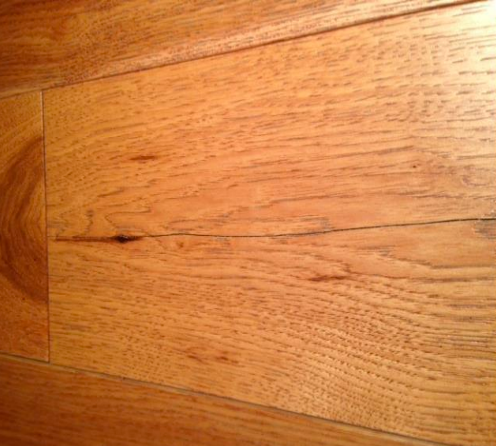Engineered Flooring vs. Solid Hardwood Flooring
Why you may not require engineered hardwood flooring
Many people have been told that they require engineered hardwood flooring and cannot use solid hardwood flooring for their project. Carpet stores seem to be continually pushing clients towards engineered flooring, telling them it is the only flooring option that will work in their situation. It may be because they live on the water, they leave their home unoccupied for a certain period of time, or any number of other reasons. The fact is, engineered hardwood flooring is still wood, and will react accordingly if put in the wrong environment. The only difference between solid hardwood flooring and engineered hardwood flooring is that solid hardwood is the same wood throughout the entire thickness, whereas engineered hardwood flooring has hardwood on the surface and plywood, or another material, on the underside.
When you need Engineered Flooring
The only time you really “need” to install engineered hardwood flooring is when you are gluing it directly to concrete or if it is being installed below grade. Other than some specific solid hardwood products like quartersawn oak, you will typically want to install engineered flooring over any type of radiant heat. Not all engineered hardwood flooring is suitable for installations over radiant heat. Very dense woods such as hickory will have more of a tendency to check and crack when installed over radiant heat. The ideal engineered floor for installation over radiant heat is quartersawn white oak. For more information on flooring for over radiant heat, check out our Video “Hardwood Flooring Over Radiant Heat”
Engineered hardwood flooring is more stable than solid hardwood but it is still a wood product and not without issues. It is not the perfect alternative to solid wood flooring that carpet stores and some manufacturers promote it as. Engineered flooring does give you the ability to go with a wider board but your relative humidity levels must be controlled to relatively the same level as solid hardwood flooring. We recommend 30-50% for solid and 35-60% for engineered. One large manufacturer advertises an engineered product that can handle a humidity range between 20-70%, yet their warranty doesn’t cover the cracks and checks that this extreme humidity fluctuation would cause.

One area where solid hardwood flooring outperforms engineered flooring is in a dry environment. When solid hardwood is exposed to a humidity level below 30%, it will shrink, causing gaps between the boards. When engineered flooring is exposed to a humidity level below 35%, it will dry out. This causes either dry cupping or surface checks in the boards. Surface checking is the most common issue we have with our engineered floor. This occurs in a dry environment because the surface layer shrinks when it is dried out. The bottom layer which is plywood doesn’t move, and eventually the wood surface will check at its weakest point.

On thinner engineered hardwood products, this dryness can cause what is called dry cupping. The surface wood layer shrinks causing it to curl up, which brings the lower layers with it. This can also occur in products with a very large surface wood layer. This large surface wood layer will overpower the plywood below, also causing it to curl up. If this continues to be exposed to a dry environment, the surface layer can delaminate from the backing as seen in the adjacent photo. *Photo courtesy of the National Wood Flooring Association
Our Gaylord engineered flooring is the perfect balance between having a thick surface layer, but not one that overpowers the plywood below. We have never experienced “dry cupping” in our engineered flooring, but it will certainly check and crack. The surface wood layer wants to shrink and the plywood backing won’t let it. Eventually, this pressure will cause the surface board to crack. To see the difference between Gaylord engineered flooring and competitors, watch our Video “Engineered Hardwood Flooring Comparison”
We also have clients who are under the impression that engineered flooring is more durable than solid hardwood flooring. This is not the case. Engineered flooring is still wood on the surface so it will be the same durability as solid wood. Our engineered flooring is finished the same was as our solid hardwood so the durability is exactly the same.

Our engineered flooring is by far the best engineered flooring on the market. It comes in lengths up to 12 feet and widths up to 10 inches. Most engineered flooring on the market is 5/8” thick or thinner, and comes in lengths less than 7 feet, even in wide planks which make for a very choppy looking floor. Our engineered flooring is also random lengths, just like solid hardwood. Most imported engineered floors come in either one set length or a combination of a few different lengths providing a very patterned and fake looking floor. Gaylord engineered flooring is also ¾” thick so it can be nailed down like solid hardwood.
It can also be installed using the following methods:
Wide Plank Nail Down Installation: https://www.youtube.com/watch?v=YUYGiaV-PlM
Full Glue Down Installation: https://www.youtube.com/watch?v=w_vaw-Ch9GU
Floating Installation: https://www.youtube.com/watch?v=Zam1ITx3aXI
